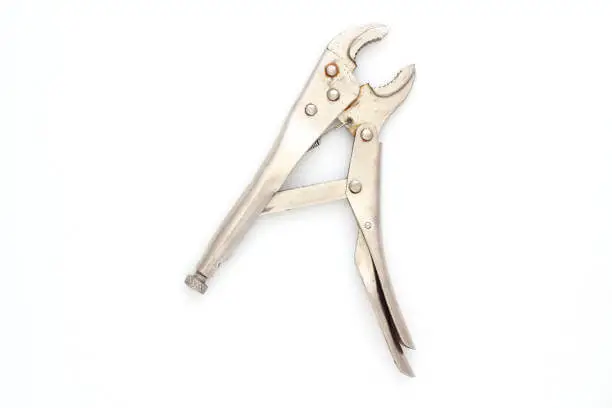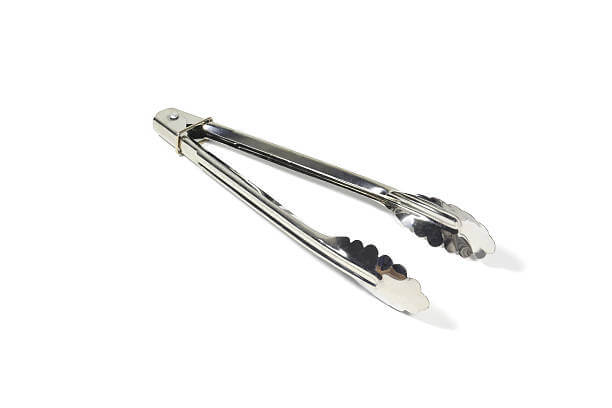Pliers are general-purpose tools that are designed for gripping and holding objects. Pliers are used for a variety of tasks, including gripping, cutting, and bending wire or other materials.
However, what can I use instead of pliers if I don’t have a plier on hand?
What to use if you don’t have pliers? There are several tools that can be used in place of pliers, depending on the task at hand. Please noticed using alternatives in the incorrect way can damage the tool and potentially result in injury.
Using wrenches instead of a pliers
Wrenches come in a variety of shapes and sizes and can be used to grip and turn bolts and nuts. So wrenches can be used instead of pliers for tightening and loosening bolts and nuts.
But pliers should not be used as wrenches, which are specifically designed for tightening or loosening nuts and bolts.
Wrenches and pliers are both tools that can be used to tighten or loosen bolts, nuts, and other fasteners. However, they are designed for different purposes and have different features that make them more or less suitable for certain tasks.

Wrenches are typically larger and more heavy-duty tools that are used for tightening or loosening bolts and nuts that are too large or too tight to be handled with a screwdriver or pliers.
There are several different types of wrenches, including open-end wrenches, box wrenches, and adjustable wrenches, which are designed to fit different sizes and shapes of bolts and nuts.
Wrenches are typically used for mechanical work on cars, machinery, and other large structures.
Pliers, on the other hand, are smaller, more versatile tools that are used for gripping, holding, and manipulating small objects.
They typically have a pair of jaws that can be opened and closed to grasp objects, and are used for tasks such as bending wire, cutting wire, or removing nails. Pliers are often used in electrical work, jewelry making, and other fine-motor tasks.
So, while it is possible to use a wrench in place of a pliers in some cases, it may not be the most effective tool for the job.
Similarly, pliers may not be the best choice for tasks that require a lot of torque or force, such as tightening or loosening large bolts or nuts. It is generally best to use the tool that is specifically designed for the task at hand.
Using Screwdrivers instead of a pliers
Screwdrivers can be used instead of pliers in some cases, particularly for turning screws.
Screwdrivers come in several different types, including Phillips head, flat head, and torque. You can use a screwdriver to turn a screw by placing the tip of the screwdriver into the head of the screw and turning it in the appropriate direction.

However, keep in mind that screwdrivers are not designed for gripping or holding objects in the same way that pliers are.
If you need to grip or hold onto an object, a screwdriver may not be the best tool for the job. In these cases, you may need to find another tool to use as a substitute for pliers. Some options might include vise grips, wrenches, or a hammer, depending on the task at hand.
Using Vise grips instead of a pliers
Vise grips are a type of clamp that can be used to grip and hold onto objects, similar to pliers.
Vise grips, also known as locking pliers, can be used as a substitute for pliers in some cases.
They are a type of adjustable plier that can be tightened onto an object to hold it in place. Vise grips have jaws that can be adjusted to fit different sizes of objects, and they can be tightened onto the object by turning a screw or lever.

Vise grips can be used for tasks such as gripping, clamping, or bending. Some examples of tasks where vise grips might be used as a substitute for pliers include:
- Holding onto an object that is too large or too small for regular pliers
- Gripping an object that is slippery or difficult to hold onto with regular pliers
- Clamping onto an object that needs to be held firmly in place
- Bending wire or other materials that are too thick or hard to bend with regular pliers
However, Vise grips are not designed for cutting, and they should not be used as a substitute for cutting tools.
Using clamps instead of a pliers
Clamps can be used instead of pliers in many situations. Clamps are a type of tool that is used to hold objects firmly in place, often while cutting, gluing, or otherwise working on them.
They can be especially useful when you need to hold an object steady with a lot of force, or when you need to apply pressure to an object from multiple angles.

Here are a few examples of how clamps might be used instead of pliers:
- Woodworking: When working with wood, clamps can be used to hold pieces together while glue dries or while you drill or saw them.
- Automotive repair: Clamps can be used to hold parts in place while you work on them, such as when replacing a brake hose or installing a new muffler.
- Photography: Clamps can be used to hold lights, backdrops, or other equipment in place, allowing you to set up your shot more easily.
- Home repair: Clamps can be used to hold pipes, wires, or other objects in place while you work on them, making it easier to make repairs or installations.
In general, clamps are a useful tool to have on hand for any project where you need to hold an object steady or apply pressure from multiple angles.
Using Tongs instead of a pliers
You can use tongs instead of pliers in certain situations. Tongs are a type of tool that consists of two long, flat arms that are connected at one end and can be opened and closed by a hinge.
They are often used for holding and manipulating hot objects, such as food in a kitchen or metal in a workshop.

Here are a few examples of how you might use tongs instead of pliers:
- Grilling: You can use tongs to hold and turn food on a grill, rather than using pliers to do so. This is particularly useful if you are cooking food that is delicate or prone to breaking, such as fish or vegetables.
- Kitchen tasks: Tongs can be useful in the kitchen for a variety of tasks, such as flipping pancakes, lifting hot pots and pans, and serving food. They can also be used to hold and manipulate food that is being cooked or prepared, such as flipping slices of bacon or turning chicken breasts.
- Workshop tasks: In a workshop, you might use tongs to hold and manipulate hot metal, such as when forging or welding. Tongs can also be used to hold small objects that you don’t want to touch with your fingers, such as nails or screws.
Overall, tongs can be a useful tool to have in your toolkit, and can be used in place of pliers in certain situations where you need to hold or manipulate objects that are hot or delicate.
Using Tweezers instead of a pliers
Tweezers are a type of tool that can be used to grip and hold onto small objects, similar to pliers. They are often used for precision tasks, such as removing splinters or picking up small components.
You can use tweezers instead of pliers in some situations. Tweezers are small, handheld tools that are typically used for picking up or holding small objects, such as beads, electrical components, or splinters. They have long, thin jaws that can grasp small or narrow objects with precision.
Here are a few examples of situations where you might use tweezers instead of pliers:
- Removing splinters: If you have a splinter that is difficult to remove with your fingers, tweezers can be a useful tool. They can help you grasp the splinter and gently pull it out.
- Handling small components: If you are working on a project that requires handling small electronic components, such as resistors or capacitors, tweezers can be a more precise tool than pliers.
- Doing detailed work: If you need to do detailed work on a small object, such as assembling a model or working on jewelry, tweezers can be more precise and easier to handle than pliers.
Overall, tweezers are a useful tool to have in your toolbox because they can help you handle small objects with precision and control.
However, they may not be as strong or versatile as pliers in some situations, so it’s always a good idea to have both tools available.
Using Hammers instead of a pliers
While you can use a hammer for some tasks that you might normally use pliers for, it is generally not a good idea to use a hammer as a substitute for pliers.
Hammers are designed for striking or pounding objects, and are not well-suited for gripping or manipulating small or delicate objects.

Here are a few examples of situations where you might use a hammer instead of pliers:
- Driving nails or stakes: If you need to drive a nail or stake into wood or another material, a hammer is the appropriate tool.
- Demolition work: If you are tearing down a wall or other structure, a hammer can be used to break apart the materials.
- Forming metal: If you need to shape metal by bending or flattening it, a hammer can be used to strike the metal with force.
Overall, while a hammer can be used for some tasks that you might normally use pliers for, it is generally not a good substitute because it is not designed for gripping or manipulating small objects. Pliers are a more appropriate tool for these types of tasks.
Summary
The best tool to use in place of pliers will depend on the specific task at hand and the materials you are working with.
It’s always a good idea to have a variety of tools on hand so that you have the right tool for the job. However, it’s important to use the tools properly and to choose the right tool for the task to ensure your safety and the effectiveness of the work.